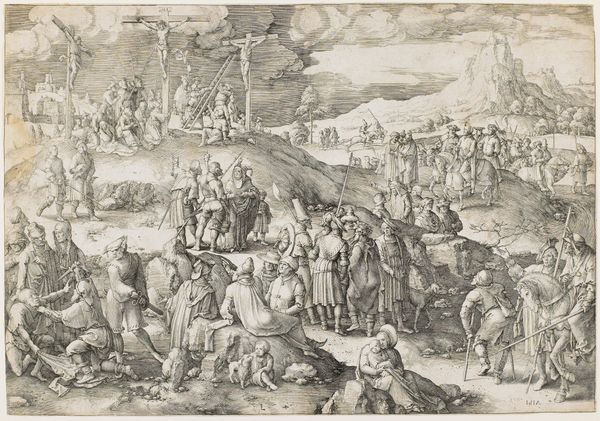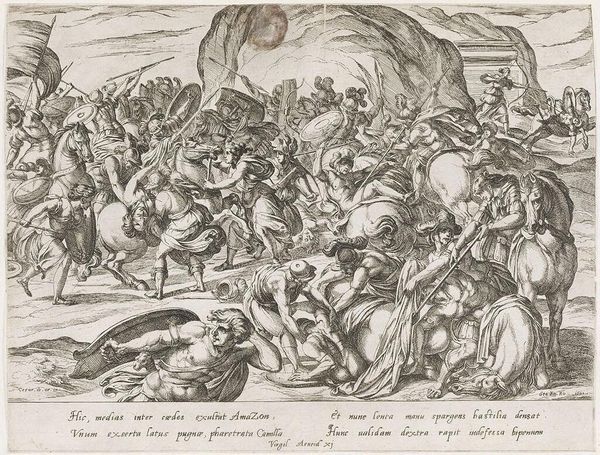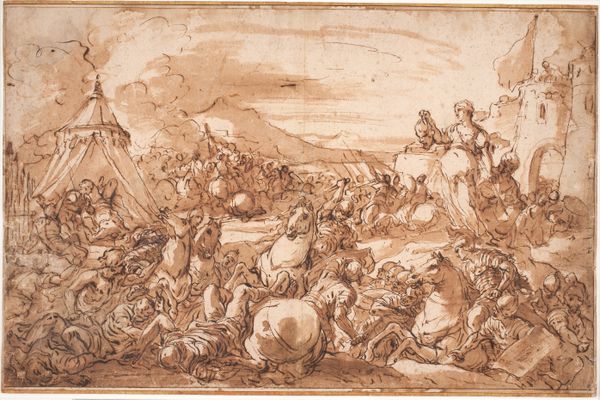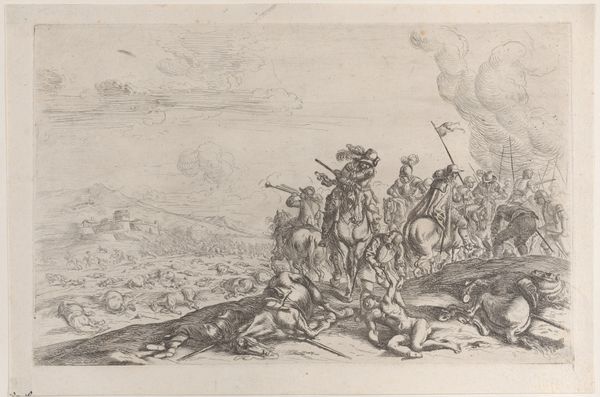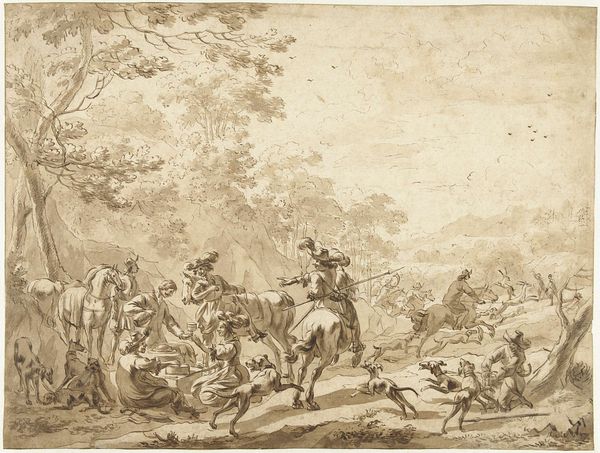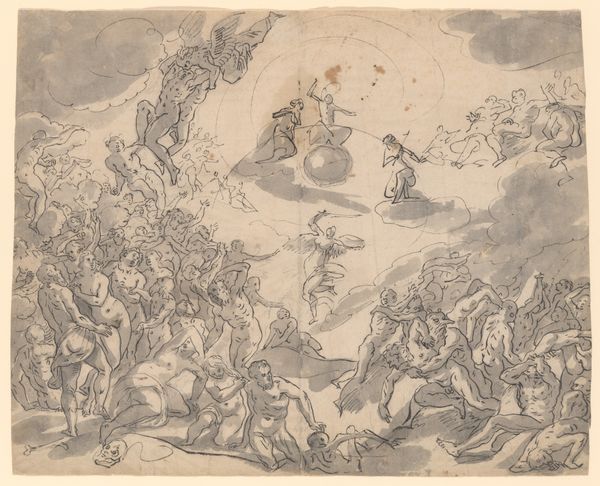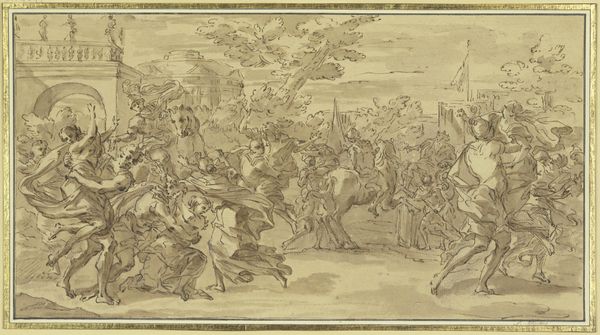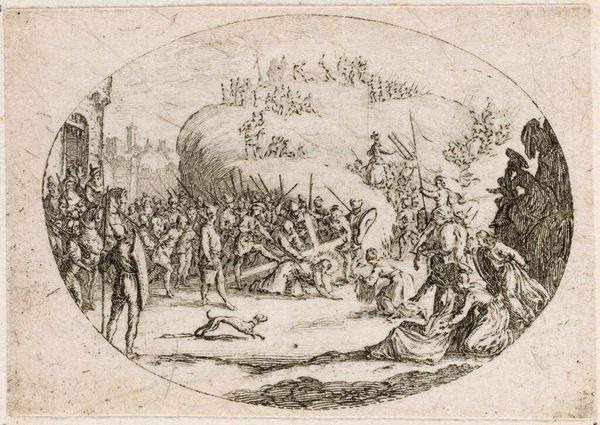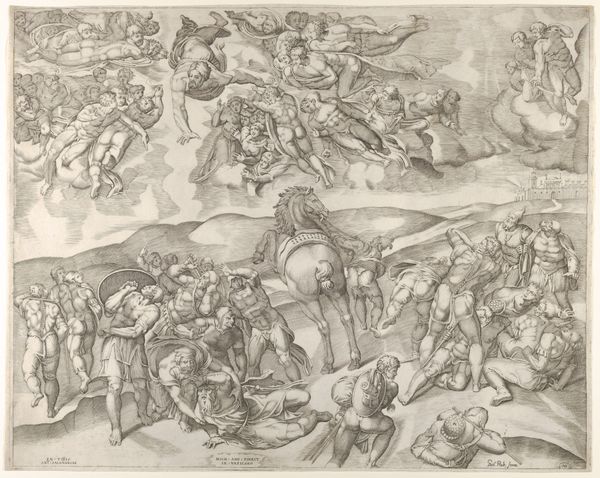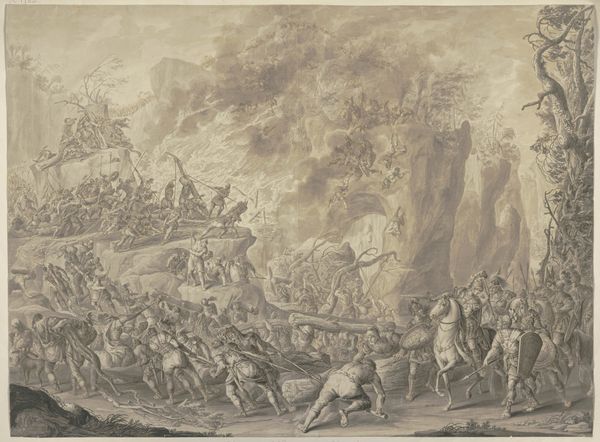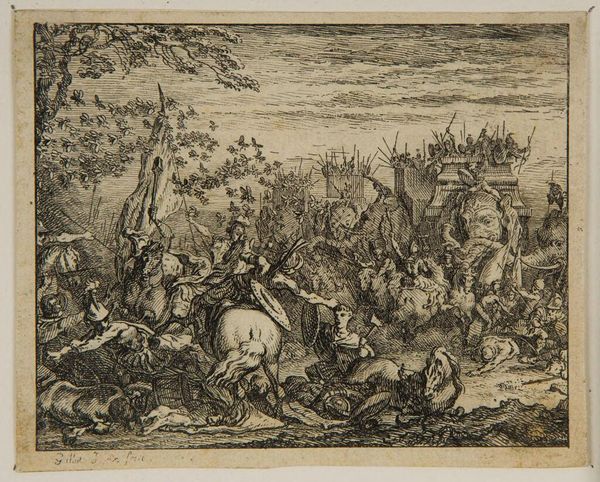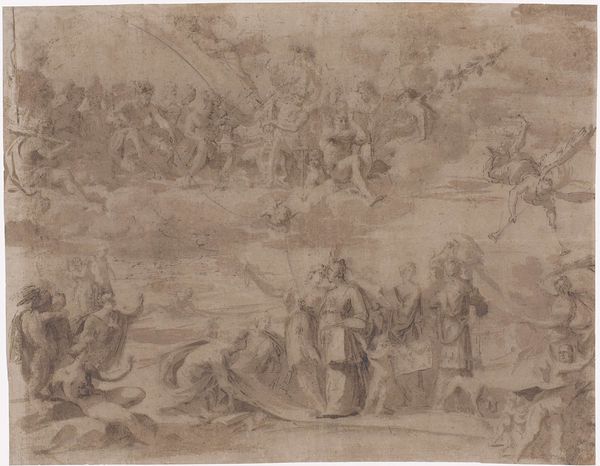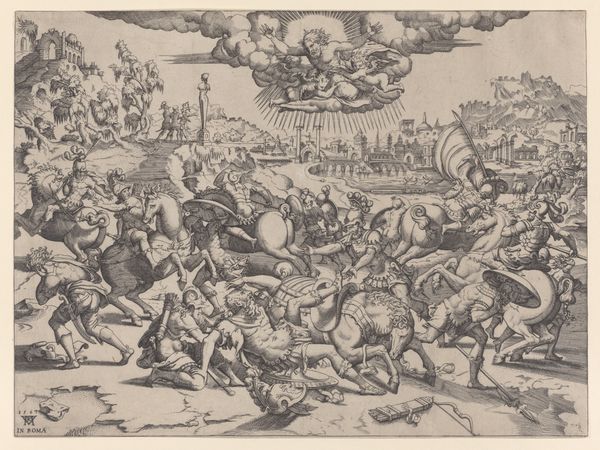
Een heilige bisschop knielt terzijde van de stoet van een Romeinse Imperator 1567 - 1629
0:00
0:00
drawing, ink, pen
#
drawing
#
allegory
#
narrative-art
#
ink painting
#
pen sketch
#
mannerism
#
figuration
#
ink
#
pen
#
history-painting
Dimensions: height 209 mm, width 304 mm
Copyright: Rijks Museum: Open Domain
Editor: We’re looking at “A Holy Bishop Kneeling Beside the Procession of a Roman Emperor,” a pen and ink drawing by Bernardo Castello, made sometime between 1567 and 1629. The color gives it a warm feel, but the subject matter…it's complex, filled with figures and symbolism I'm still trying to unpack. What do you see in this work? Curator: What I see is a carefully constructed tableau steeped in the power dynamics of its era. Notice the placement of the bishop in relation to the Emperor – kneeling, subservient. Consider this image within the context of the Counter-Reformation. Editor: How so? Curator: Well, look at the Emperor’s procession – a display of earthly power – juxtaposed with the divine figures in the sky. Castello uses allegory to explore the Church's struggle to maintain spiritual authority amidst the grandeur and potential corruption of temporal power. This piece critiques the relationship between the spiritual and secular realms. What statements are being made about who gets to tell the story, and whose stories get remembered? Editor: That kneeling position...it initially felt reverential, but framed this way, it’s almost an act of resistance. Like a subtle challenge to the Emperor's absolute authority? Curator: Precisely. Castello is prompting us to consider where true power resides – is it in military might and earthly processions, or in moral and spiritual conviction? The ink medium itself adds to this interpretation. Editor: It's amazing how much the historical context shifts my perception of the piece. Thanks to your guidance, I feel like I'm now seeing it as an intersection between religious authority, political maneuvering, and personal conviction. Curator: And hopefully, that's sparked even more questions. That's where real engagement with art history begins.
Comments
No comments
Be the first to comment and join the conversation on the ultimate creative platform.

